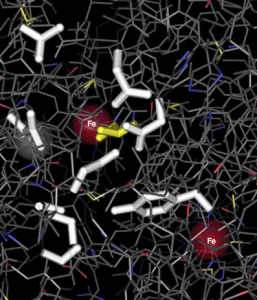 We published two papers this week shedding light into the molecular mechanisms of adaptation to H2S-rich environments. Both mechansisms that reduce internal H2S concentrations and mechanisms that allow coping with elevated internal concentrations appear to play a critical role, although there is variation among evolutionarily independent sulfide spring populations. In a paper published in Comparative Biochemistry and Physiology A, we were able to show hertitable differences in gene expression patterns between sulfide adapted and non-adapted populations. Depending on the organ, SQR – a critical enzyme in sulfide detoxification – is either constitutively or plastically higher expressed in sulfidic populations. A paper published in Nature Communications also indicated that at least some sulfidic P. mexicana populations exhibit an H2S-resistant COX, one of the primary targets of H2S toxicity. All in all, an exciting prelude for the upcoming genome-wide analysis of adaptive mechanisms in sulfide spring fishes.
We published two papers this week shedding light into the molecular mechanisms of adaptation to H2S-rich environments. Both mechansisms that reduce internal H2S concentrations and mechanisms that allow coping with elevated internal concentrations appear to play a critical role, although there is variation among evolutionarily independent sulfide spring populations. In a paper published in Comparative Biochemistry and Physiology A, we were able to show hertitable differences in gene expression patterns between sulfide adapted and non-adapted populations. Depending on the organ, SQR – a critical enzyme in sulfide detoxification – is either constitutively or plastically higher expressed in sulfidic populations. A paper published in Nature Communications also indicated that at least some sulfidic P. mexicana populations exhibit an H2S-resistant COX, one of the primary targets of H2S toxicity. All in all, an exciting prelude for the upcoming genome-wide analysis of adaptive mechanisms in sulfide spring fishes.
Evolution in Extreme Environments
Tobler Lab at the University of Missouri—St. Louis
